|
Iloca II
The Iloca II was introduced around 1950 as the rangefinder version of the Iloca I v.2. It featured a coupled rangefinder and helical focusing. Like on the Iloca I, the shutter release was located on the shutter itself and the shutter had to be cocked by hand. The wind lock mechanism was also the same as on the Iloca I: after taking a picture one had to push down the wind knob to reset the wind lock, after which one could wind the film for the next exposure.
In comparison with the Iloca I/Ia and IIa models, very little changed during production of the Iloca II, other than the wind knob locking nut which changed from dome-shaped to flat. A similar change occurred during the production of the Iloca I v.2
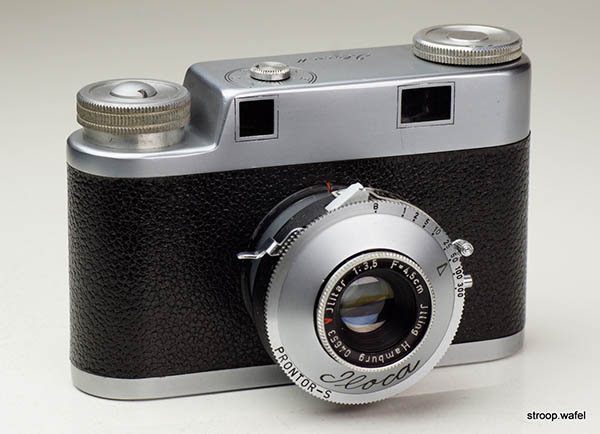
An early production Iloca II with a coated Illing Ilitar 4.5cm f/3.5 lens and dome-shaped wind knob nut.
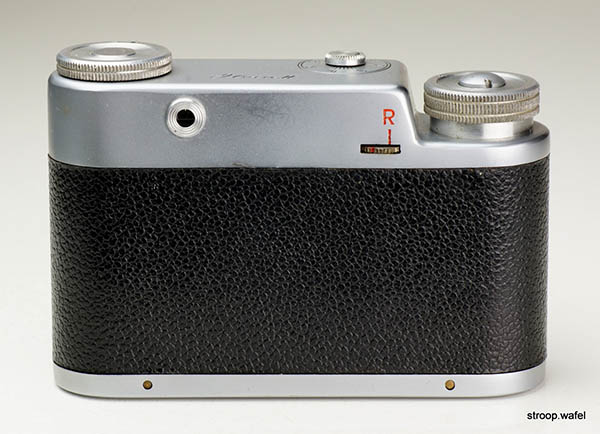
Rear view of the Iloca II. It had no depth of focus scale like the later IIa.
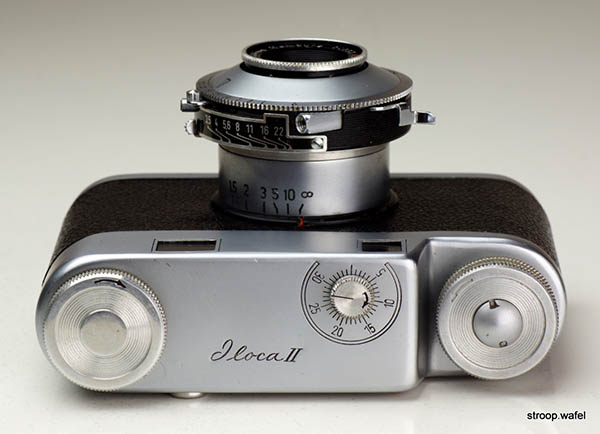
Top view of an early Iloca II with frame counter markings engraved in the top housing. Unlike later models the Iloca II had no collar around the lens base.
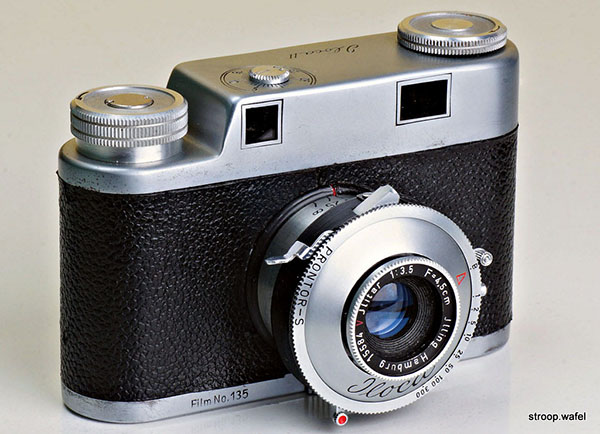
A late production Iloca II which is identical to the one above except for the flat wind knob nut. This example was an export version as it had a distance scale indicated in feet and had the film format engraved on the bottom plate.
Iloca IIa v.1
The Iloca IIa was the rangefinder version of the Iloca Ia, so it had a body shutter release. Because of the space this took, the wind knob was made smaller. Like on the Iloca Ia, the frame counter was integrated in the top housing and the lens base received a collar. Also similar is the large range of shutter and lens markings that can be found (see Iloca Ia for details) and the transition from a model with black lens ring (v.1) to one with a silver one and a depth-of-field scale on the back of the camera (v.2).
Early production of the Iloca IIa v.1. had 'Iloca' embossed on the shutter plate (generally a Prontor-S) and a red triangle as speed marker. Main production had a blank shutter plate (generally a Prontor-SV) and an open triangle as speed indicator. Later examples of these already had depth-of-field scales on the back. Late production had a single dot as a speed indicator, these all had depth-of-field scale on the back.
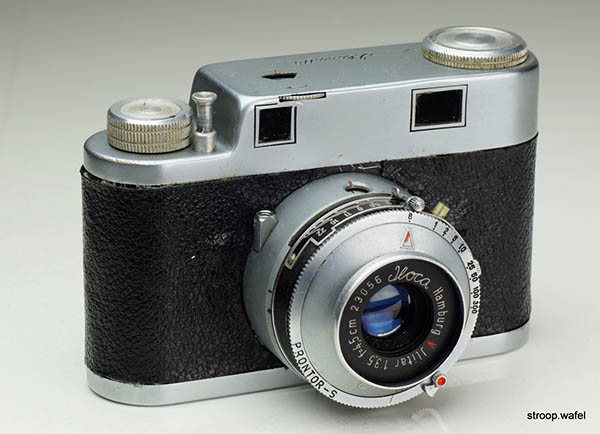
An early production Iloca IIa v.1 with a red triangle on a blank shutter plate and an Iloca Jlitar 45mm f/3.5 lens. The markings on the lens ring are a bit unusual as they were made in a font much larger than on other Iloca I and II models.
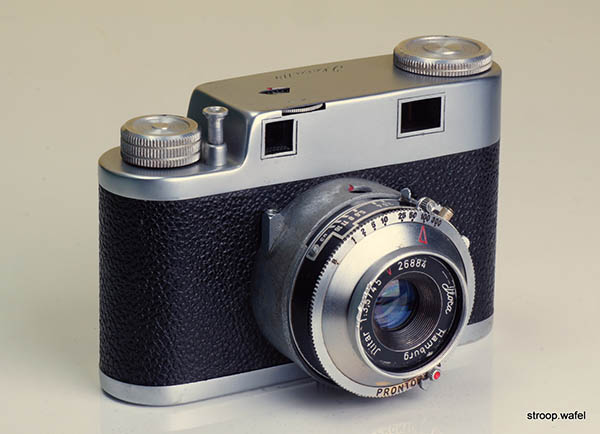
A main production Iloca IIa v.1 with an open triangle on a blank shutter plate and an Iloca Jlitar 45mm f/3.5 lens. This example also has a depth-of-field scale on the back.
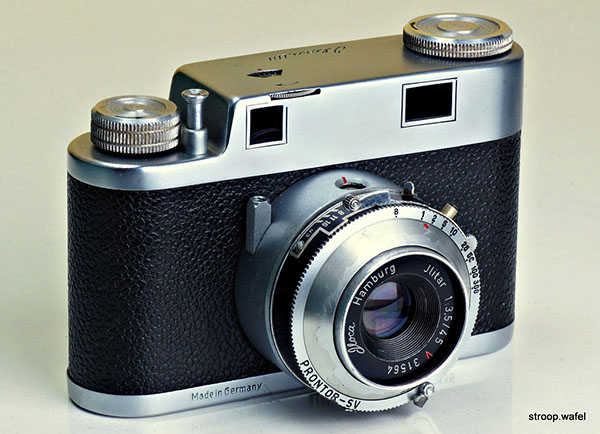
A late Iloca IIa v.1 with a red dot as shutter speed indicator and an Iloca Jlitar 45mm f/3.5 lens.
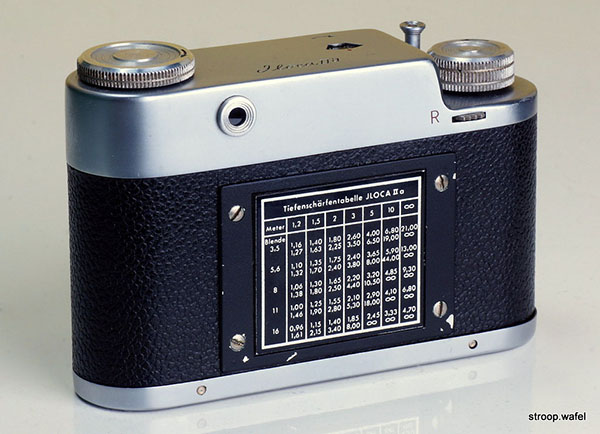
The backside of the Iloca IIa with depth of field table in German. One of the advantages is that one can unscrew this for access to the inside of the camera, for instance in case there is a problem with film loading or if one wants to check the focus accuracy.
The rangefinders of the Iloca II and IIa usually have not stood the test of time well. All models I got had lost most of the reflective coating on the mirrors and the rangefinders were usually, often wildly, inaccurate.
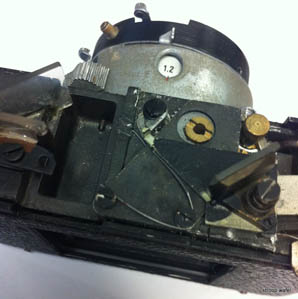
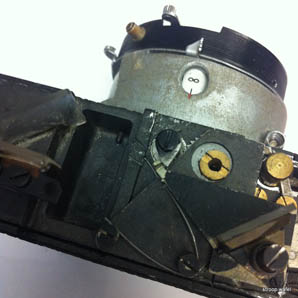
Close up of the rangefinder mechanism of an Iloca IIa with focus at 1.2m (left) and infinity (right). The angle of the mirror is controlled by a small peg visible in the centre of the images, under the black screw. Note the small difference in the angle of the peg. Although some adjustment of the rangefinder can be done with the small screw behind the mirror post, after removing and recoating the semi-transparent mirror the rangefinder is often so far out that one needs to adjust the little peg. Quite a nightmare. Also note the semi-transparent mirror on the far left... not much coating left, a very common problem with Iloca II and IIa rangefinder units.
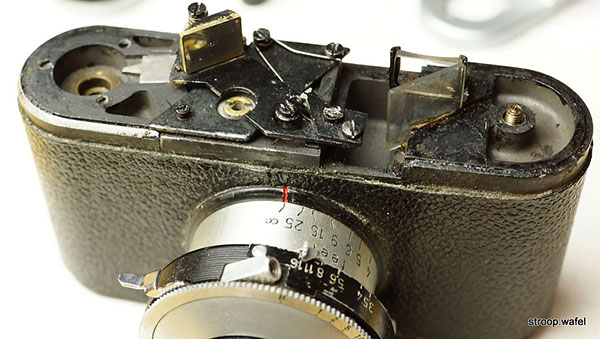
Rangefinder mechanism of an Iloca II. It is slightly different from the Iloca IIa, here there's an extra metal bit with two screws. The rangefinder can be adjusted by fiddling with these two screws, again a job that requires a lot of patience, and the thread of the screw holes is easily damaged, leaving a wobbly rangefinder... Note again the poor condition of the semi-transparent mirror (on the right).
Some Iloca IIs had a little adjustment screw on each mirror so it was easier to correct horizontal and vertical offsets. I am not sure why Iloca abandoned that option later.
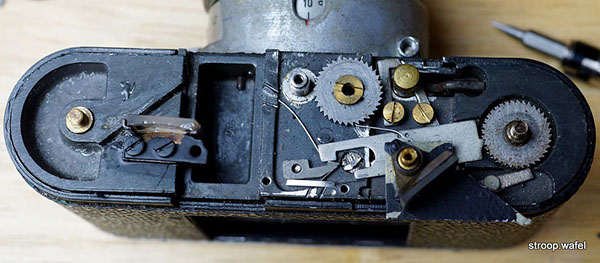
Inside mechanism of an Iloca IIa. In principle not that different from the Iloca Ia. Note that the rangefinder mirror has been swung out of the way to expose the mechanism underneath. The semi-transparent mirror was removed for recoating.
Iloca IIa v.2
The second incarnation of the Iloca IIa had a silver-coloured lens instead of the black one of earlier versions. Nearly all had Prontor-SV shutters and a single red dot as speed indicator. Many of these appear to have had he markings 'Made for Navy service' on the bottom plate.
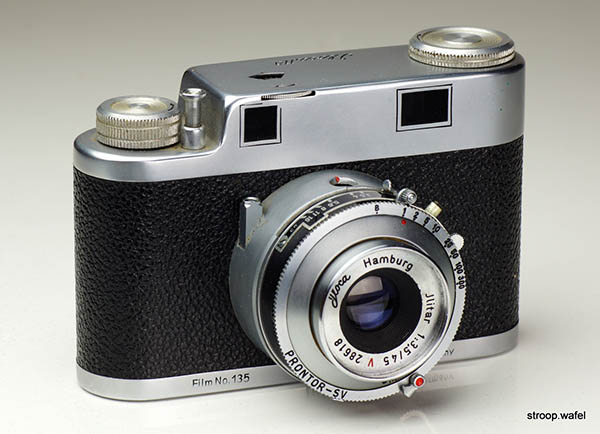
An Iloca IIa v.2 with silver-coloured llitar 45mm f/3.5 lens.
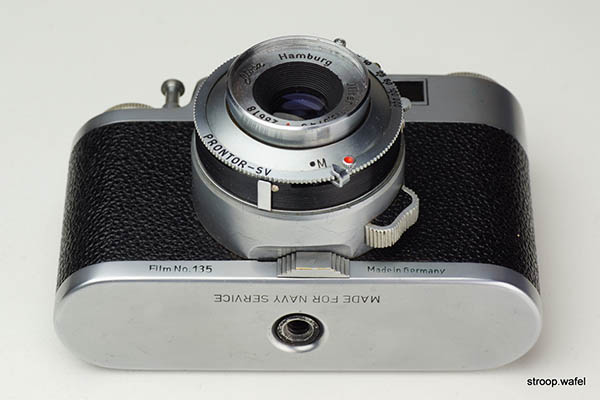
The bottom plate of this and many other late Iloca IIas had 'Made for Navy service' engraved in the bottom plate. If these Ilocas really were used by the Navy appears a little doubtful, these weren't particularly robust and sturdy cameras. But perhaps Wilhelm Witt struck a deal and it would be interesting to fin d out some servicemen have indeed used some of these.
| 
